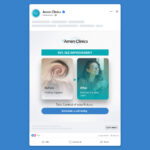Contents:
- Introduction
- Understanding Email Marketing
- Implementing Email Marketing
- Types of Email Campaigns
- A/B Testing in Email Marketing
- Growing Your Email Subscriber List
- Segmenting Your Email List
- Automating Email Marketing
- Tools for Effective Email Marketing
- Conclusion
Introduction:
Why Trust Email Marketing?
Ten years ago, the digital landscape was vastly different. Social media was just gaining traction, and many questioned the longevity of email as a marketing tool. But here we are, a decade later, and email marketing stands tall, unyielding in its effectiveness. Why, you ask? Because it’s personal, direct, and when done right, incredibly persuasive.
Current Relevance of Email Marketing
Imagine this: You’re sifting through your inbox, and amidst the clutter of promotions and newsletters, there’s an email that speaks directly to you. It understands your needs, offers a solution, and urges you to take action. That’s the power of email marketing. According to a recent SmartInsight report, email marketing isn’t just alive; it’s thriving, ranking as one of the most crucial marketing channels alongside SEM, SEO, and affiliate marketing.
But here’s the real question: In an age dominated by social media and instant messaging, why do seasoned internet marketers still swear by emails? The answer is simple. Emails offer a sense of intimacy, a one-on-one conversation between the brand and the consumer. It’s a space where marketers can be direct, data-driven, and incredibly persuasive.
So, if you’re an internet marketer looking to harness the power of emails, you’re in the right place. Dive in as we unravel the intricacies of email marketing and how you can make it work for you.
Understanding Email Marketing
Definition and Purpose
Have you ever received an email that seemed like it was crafted just for you? An email that resonated with your needs, desires, and aspirations? That, my friend, is the magic of email marketing. But let’s break it down a bit.
Email marketing, at its core, is the art and science of sending targeted, personalized messages to a specific audience with the intent to inform, engage, and ultimately, convert. It’s not about bombarding inboxes with relentless promotions. No. It’s about delivering value, building a relationship, and fostering trust. When executed with precision, it becomes a powerful tool that not only educates potential customers about the value of a product or service but also nudges them toward making a purchase.
Importance of Email Marketing
Now, you might be thinking, “In a world teeming with marketing channels, why should I prioritize email?” Here’s why:
- Cost-Effectiveness: Unlike many other marketing channels that can burn a hole in your pocket, email marketing offers a high return on a relatively low investment. It’s all about reaching the right people with the right message.
- High ROI: The numbers don’t lie. For every dollar spent on email marketing, the average return is a whopping $42. That’s a testament to its efficacy.
- Targeted & Personalized Messaging: With email marketing, you’re not shouting into the void. You’re speaking directly to individuals who have shown interest in your brand or product. And with the power of segmentation, you can tailor your messages to resonate with different segments of your audience.
- Broad Reach with Precision: Whether you’re reaching out to a global audience or a niche segment, emails allow you to cast a wide net with pinpoint accuracy.
- Engagement & Relationship Building: Emails provide a platform for sustained engagement. It’s a channel where you can nurture leads, provide value, and build a lasting relationship with your audience.
Implementing Email Marketing
Defining Your Audience
Picture this: You’ve crafted the perfect email. It’s persuasive, engaging, and packed with value. But here’s the catch – you’re sending it to the wrong audience. It’s like trying to sell ice in the Arctic. Pointless, right? That’s why the first step in any successful email marketing campaign is to define your audience.
Who are they? What are their pain points? What drives them to take action? By understanding your audience’s geography, demographics, past behaviors, and preferences, you can segment them into distinct groups. This allows for more targeted and personalized messaging, ensuring that your emails resonate with the recipients.
Choosing the Right Platform
Now that you’ve got a clear picture of your audience, it’s time to choose your weapon, or in this case, your email marketing platform. Think of it as your command center, a place where you’ll design, dispatch, and dissect your email campaigns.
Whether you’re a small business or a sprawling enterprise, there’s a platform out there that’s tailor-made for your needs. From crafting compelling campaigns to setting the perfect call to action, your chosen platform should be intuitive, feature-rich, and scalable. And remember, it’s not just about sending emails; it’s about analyzing their impact, optimizing for better results, and iterating on your strategy.
Testing and Optimizing Emails
Ever heard the phrase, “The devil is in the details”? When it comes to email marketing, truer words have never been spoken. Before hitting that ‘send’ button, it’s crucial to test every element of your email.
- Subject Line: Does it grab attention? Is it intriguing enough to prompt an open?
- Content: Is it relevant? Does it offer value? Is it persuasive without being pushy?
- Call to Action (CTA): Is it clear and compelling? Does it stand out?
- Visual Elements: Are your images and design elements enhancing your message or distracting from it?
By A/B testing these elements, you can determine what resonates most with your audience and optimize accordingly. Remember, in the world of email marketing, assumptions are your enemy. Let data drive your decisions.
Types of Email Campaigns
1. Welcome Emails
Ah, the first impression! It’s said you never get a second chance to make one, and in the digital realm, this couldn’t be truer. Welcome emails are your brand’s handshake, your introduction. They set the tone for the relationship you hope to build with your new subscriber.
According to CampaignMonitor, welcome emails have an astounding average read rate of 34%. Why? Because they tap into the curiosity and interest of a fresh subscriber. They’re your chance to showcase your brand’s value, ethos, and what the subscriber can expect in the future.
P.S.: Always ensure your welcome email is timely, relevant, and packs a punch.
2. Newsletters
Think of newsletters as your monthly catch-up with a friend. It’s where you share updates, stories, and everything in between. But here’s the catch – your newsletter needs to be more than just information. It needs to be a compelling narrative, a blend of education and entertainment. It’s your chance to keep your audience engaged, informed, and eager for more.
P.S.: Consistency is key. Whether it’s the design, tone, or delivery schedule, ensure your newsletters are consistent and reliable.
3. Promotional Emails
Who doesn’t love a good deal? Promotional emails are your spotlight moment, where you showcase your latest offers, deals, or launches. But remember, it’s not about hard selling. It’s about presenting an opportunity, a value proposition that’s hard to resist.
P.S.: Personalization can elevate your promotional emails from good to great. Tailor your offers to the recipient’s preferences and watch your conversion rates soar.
4. Abandonment Cart Emails
We’ve all been there – adding items to our cart, only to get distracted and forget all about it. Abandonment cart emails are gentle nudges, reminders of what we left behind. They’re not just about boosting sales; they’re about enhancing the user experience, making it seamless and intuitive.
P.S.: A picture is worth a thousand words. Including images of abandoned items can significantly increase click-through rates.
5. Re-engagement Campaigns
Relationships need effort, and the one between a brand and its subscribers is no different. Re-engagement campaigns are all about reigniting the spark, rekindling interest, and reminding subscribers why they fell in love with your brand in the first place.
P.S.: Sometimes, all it takes is a simple “We’ve missed you” to bring a subscriber back into the fold.
6. Sponsorship Emails
Ever thought of teaming up with another brand to expand your reach? That’s what sponsorship emails are all about. They allow you to showcase your offerings in another brand’s newsletter, tapping into a new audience and potential leads.
P.S.: Choose your partners wisely. Ensure their audience aligns with your brand’s ethos and target demographic.
A/B Testing in Email Marketing
Importance and Benefits
Ever stood at a crossroads, unsure of which path to take? In the world of email marketing, those crossroads are frequent. Should the CTA be “Learn More” or “Discover Now”? Should the image be at the top or the middle? Enter A/B testing, your trusty compass in the world of decision-making.
A/B testing, often termed split testing, is the process of sending two variations of an email to see which one performs better. It’s not about guessing or going with your gut; it’s about letting data guide your steps. And the benefits? They’re manifold.
P.S.: With A/B testing, you’re not just optimizing; you’re learning more about your audience with every test.
Optimizing Subject Lines, Sender Names, and Personalization
- Subject Line: It’s the first thing your audience sees, the make-or-break moment that determines if your email gets opened or ignored. Crafting the perfect subject line is an art, but how do you know it’s effective? Test it. Whether it’s the inclusion of numbers, the use of urgency, or the length, every element can be optimized for maximum impact.
P.S.: Did you know? Subject lines with a sense of urgency can increase open rates by up to 22%.
- Sender Name: Who’s that email from? The sender’s name can significantly influence open rates. Whether it’s the brand name, a personal name, or a combination, testing can reveal what your audience prefers and trusts.
P.S.: A familiar and consistent sender name can be the difference between an open and a delete.
- Personalization: “Hey [Name]” or “Dear Valued Customer”? Personalization can transform your emails from generic broadcasts to tailored conversations. But it’s not just about names. From content preferences to purchase history, every bit of data can be used to craft a personalized experience.
P.S.: Personalized emails can boost click-through rates by an average of 14% and conversions by 10%.
Effective Use of CTAs
The Call to Action (CTA) is your email’s climax, the moment of truth. It’s where you urge your reader to take the next step, whether it’s reading a blog, making a purchase, or signing up for a webinar. But what words resonate most? Where should the CTA be placed? Should it be a button or a hyperlink? With A/B testing, these aren’t mysteries; they’re opportunities for optimization.
P.S.: CTAs in button format can increase click-through rates by up to 28% compared to hyperlinked text.
Growing Your Email Subscriber List
Techniques and Best Practices
Imagine hosting a grand party but realizing the guest list is rather sparse. That’s what an email campaign feels like without a robust subscriber list. But fret not! Growing your email list isn’t about magic; it’s about strategy, persistence, and offering undeniable value.
1. Offer Irresistible Lead Magnets
What’s the one thing your audience can’t resist? A free e-book? An exclusive webinar? A discount code? These lead magnets are your golden tickets, the baits that lure subscribers in. But remember, it’s not about trickery; it’s about genuine value.
P.S.: The key to a successful lead magnet? Make it relevant, valuable, and exclusive.
2. Optimize Your Sign-Up Forms
Place it at the top, or maybe the bottom? Pop-up or slide-in? The design, placement, and timing of your sign-up forms can significantly influence subscription rates. And while there’s no one-size-fits-all answer, testing and optimization can reveal what works best for your audience.
P.S.: A simple tweak in the form design or copy can boost subscriptions by up to 30%.
3. Leverage Social Media
Your social media followers are already interested in your brand. Why not invite them to join your email list? Whether it’s through posts, stories, or bio links, make the invitation enticing and straightforward.
P.S.: Cross-promotion between email and social media can amplify your reach and engagement.
4. Host Webinars and Events
Live events, be it webinars, workshops, or seminars, offer a unique opportunity. They not only position you as an authority but also provide a platform to grow your email list. Encourage registrations, offer exclusive content, and watch your subscriber count soar.
P.S.: Post-event follow-ups can further solidify the relationship with new subscribers.
5. Prioritize Quality Over Quantity
It’s easy to get caught up in the numbers game. But remember, a smaller, engaged list is far more valuable than a vast, disinterested one. Focus on attracting subscribers who genuinely resonate with your brand and offerings.
P.S.: An engaged subscriber is more likely to become a loyal customer.
Segmenting Your Email List
Benefits and Methods
Ever tried using a one-size-fits-all approach in marketing? If so, you probably realized it’s much like trying to fit a square peg in a round hole. Enter email segmentation, the art of dividing your email list into smaller, more targeted groups. It’s not just a strategy; it’s a necessity in today’s hyper-personalized marketing landscape.
Why Segment? The Undeniable Benefits
- Personalized Messaging: By segmenting your list, you can tailor your emails to resonate with specific groups. Whether it’s based on demographics, purchase history, or behavior, personalized emails are more relevant, engaging, and effective.
- Improved Open and Click-Through Rates: When your emails are relevant, they’re more likely to be opened and acted upon. Segmentation ensures your message aligns with the recipient’s interests and needs.
- Reduced Unsubscribe Rates: Nobody likes spam. By sending targeted emails, you reduce the risk of overwhelming or annoying your subscribers, leading to fewer unsubscribes.
Methods to Segment Like a Pro
1. Demographic Segmentation: Age, gender, location, occupation – these basic demographic factors can significantly influence how your subscribers interact with your emails.
2. Behavioral Segmentation: How often do they open your emails? Which products do they buy? Segmenting based on behavior can offer insights into your subscribers’ preferences and habits.
3. Purchase History: From first-time buyers to loyal customers, segmenting based on purchase history allows you to tailor offers, recommendations, and content.
4. Engagement Level: Not all subscribers are created equal. Some open every email, while others might be less engaged. Tailor your strategy to nurture both groups effectively.
5. Sign-Up Source: Did they subscribe through a webinar? A social media post? Understanding where your subscribers come from can offer insights into their interests and preferences.
Automating Email Marketing
Understanding AutoResponders
In the bustling world of digital marketing, time is of the essence. But what if you could engage with your subscribers, nurture leads, and drive conversions, all while sipping a cup of coffee or perhaps even sleeping? Welcome to the realm of AutoResponders, the silent workhorses of email marketing.
AutoResponders are pre-scheduled emails triggered by specific actions or timelines. Think of them as your virtual assistants, always on the clock, ensuring no subscriber goes unnoticed.
Setting Up and Using AutoResponders
1. Welcome Series: The first few interactions set the tone for your relationship with a new subscriber. Automate a series of welcome emails that introduce your brand, offer value, and guide the subscriber through the next steps.
2. Follow-Ups: Whether it’s a nudge to complete a purchase, a thank-you note post-purchase, or a reminder about an abandoned cart, AutoResponders ensure you’re always on top of your game.
3. Milestone Emails: Birthdays, anniversaries, or perhaps a milestone in the user’s journey with your brand – celebrate these moments with automated emails that show you care.
4. Educational Series: Position yourself as an authority in your niche by automating a series of educational emails. Whether it’s tips, how-tos, or deep dives, offer value consistently.
5. Re-engagement Campaigns: Lost touch with a subscriber? Use AutoResponders to reignite the spark, reminding them of the value you offer.
Tools for Effective Email Marketing
Mailchimp, Marketo, ConvertKit, SendinBlue
In the vast universe of email marketing, tools are your spacecraft, guiding you through the intricacies of the digital cosmos. But with a plethora of options available, how do you choose the right one? Let’s dive deep into some of the industry’s stalwarts, each offering a unique blend of features and functionalities.
1. Mailchimp: The Friendly Giant
With its user-friendly interface and a plethora of templates, Mailchimp is often the first choice for beginners. But don’t let its simplicity fool you. Beneath the surface lies a powerhouse of features, from advanced analytics to automation workflows.
P.S.: Whether you’re a solo entrepreneur or a growing business, Mailchimp scales with you, ensuring you always have the tools you need.
2. Marketo: The Enterprise Behemoth
For businesses that require a more comprehensive solution, Marketo steps in. Part of the Adobe family, it offers not just email marketing, but a complete marketing automation suite. From lead management to ROI analytics, Marketo is the tool for those who mean serious business.
P.S.: With its advanced segmentation and personalization capabilities, Marketo ensures your emails hit the mark, every single time.
3. ConvertKit: The Creator’s Muse
Designed with creators in mind, ConvertKit offers a blend of simplicity and power. Its visual automation builder is a game-changer, allowing you to craft intricate workflows with ease. Plus, with its focus on deliverability, you can be assured your emails land right where they should – the inbox.
P.S.: From bloggers to podcasters, if you’re a creator, ConvertKit might just be your perfect match.
4. SendinBlue: The All-Rounder
SendinBlue is more than just an email marketing tool; it’s a complete communication suite. From SMS marketing to chat, it offers a range of channels to engage with your audience. With its transactional email capabilities, you can ensure every touchpoint, from sign-up confirmations to purchase receipts, is on brand.
P.S.: If you’re looking for a tool that does it all, without breaking the bank, SendinBlue might be the one.
Conclusion
Staying Updated with Evolving Strategies
As we journey through the ever-evolving landscape of digital marketing, one thing becomes abundantly clear: change is the only constant. New trends emerge algorithms shift, and consumer behaviors transform. But amidst this whirlwind of change, email marketing stands tall, resilient, and robust.
However, resting on our laurels isn’t an option. To truly harness the power of emails, we must stay updated, and always eager to learn, adapt, and innovate. Whether it’s embracing new technologies, experimenting with content formats, or diving deep into analytics, the quest for email marketing excellence is ongoing.
Encouraging Continuous Learning
To all the internet marketers reading this, here’s our challenge to you: Never stop learning. Dive into courses, attend webinars, join communities, and most importantly, test, iterate, and optimize. Because in this game, knowledge isn’t just power; it’s the difference between good and great.
Remember, every email you send is an opportunity. An opportunity to inform, engage, and convert. So, make each one count. Here’s to crafting emails that resonate, captivate, and inspire action.
Sources:
- 9 Reasons Why Email Marketing Is So Important – Site-Seeker. Retrieved from https://www.site-seeker.com/9-reasons-why-email-marketing-is-so-important/
- The Importance of Email Marketing – Arcalea. Retrieved from https://www.arcalea.com/blog/the-importance-of-email-marketing
- 10 Benefits of Email Marketing: Why It’s So Important | Mailchimp. Retrieved from https://mailchimp.com/resources/benefits-of-email-marketing/
- 16 Email Marketing Benefits Your Marketing Team Must Know – HubSpot Blog. Retrieved from https://blog.hubspot.com/marketing/benefits-of-email-marketing
- Why Email Marketing Is Still Important – Lone Fir Creative. Retrieved from https://www.lonefircreative.com/blog/why-email-marketing-is-still-important






